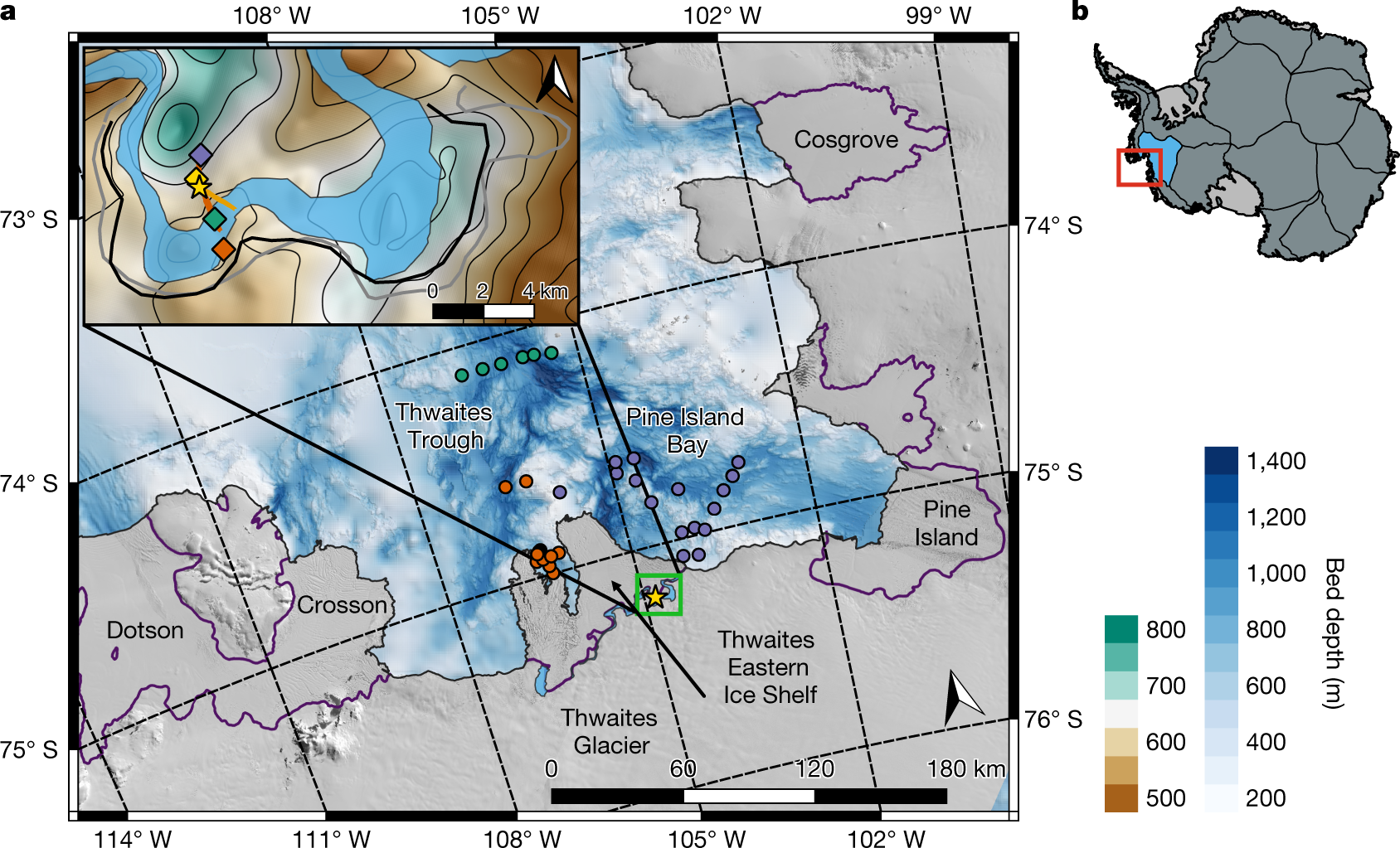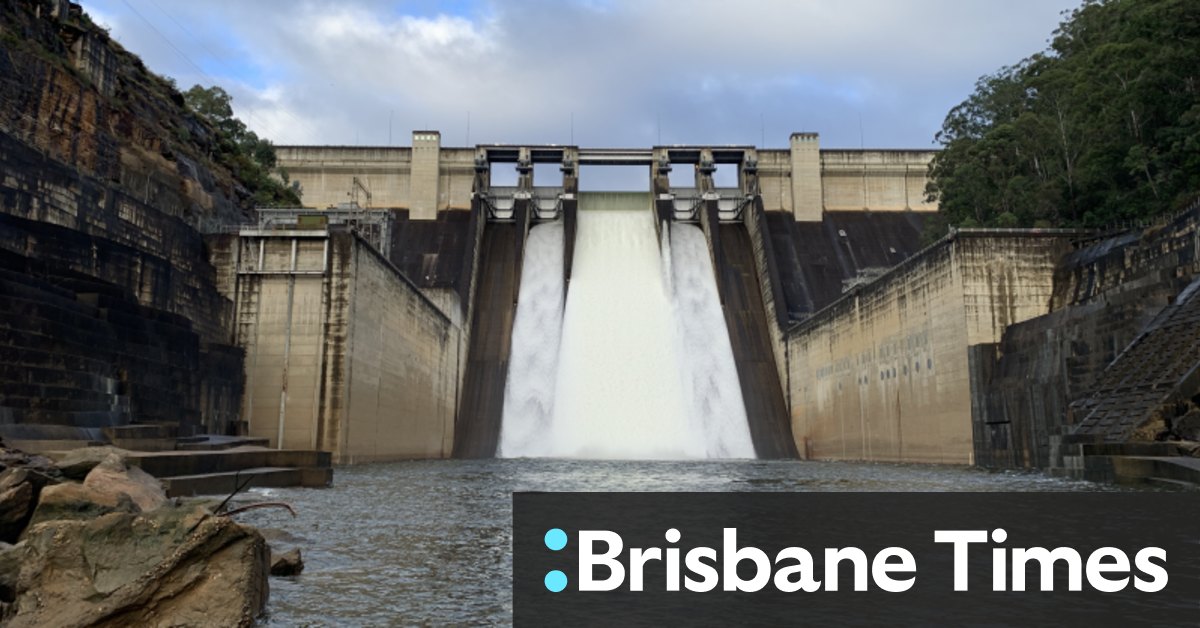
Suppressed basal melting in the eastern Thwaites Glacier grounding zone
Thwaites Glacier is one of the fastest-changing ice–ocean systems in Antarctica1–3. Much of the ice sheet within the catchment of Thwaites Glacier is grounded below sea level on bedrock that deepens inland4, making it susceptible to rapid and irreversible ice loss that could raise the global sea level by more than half a metre2,3,5. The rate and extent of ice loss, and whether it proceeds irreversibly, are set by the ocean conditions and basal melting within the grounding-zone region where Thwaites Glacier first goes afloat3,6, both of which are largely unknown. Here we show—using observations from a hot-water-drilled access hole—that the grounding zone of Thwaites Eastern Ice Shelf (TEIS) is characterized by a warm and highly stable water column with temperatures substantially higher than the in situ freezing point. Despite these warm conditions, low current speeds and strong density stratification in the ice–ocean boundary layer actively restrict the vertical mixing of heat towards the ice base7,8, resulting in strongly suppressed basal melting. Our results demonstrate that the canonical model of ice-shelf basal melting used to generate sea-level projections cannot reproduce observed melt rates beneath this critically important glacier, and that rapid and possibly unstable grounding-line retreat may be associated with relatively modest basal melt rates. Despite observations from a hot-water-drilled access hole showing warm ocean waters beneath Thwaites Glacier Eastern Ice Shelf, the basal melt rate is strongly suppressed due to the low current speeds and strong density stratification.





























